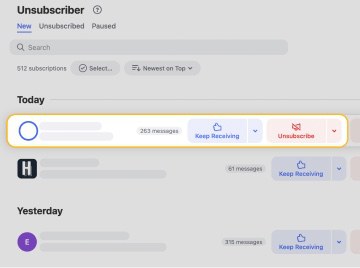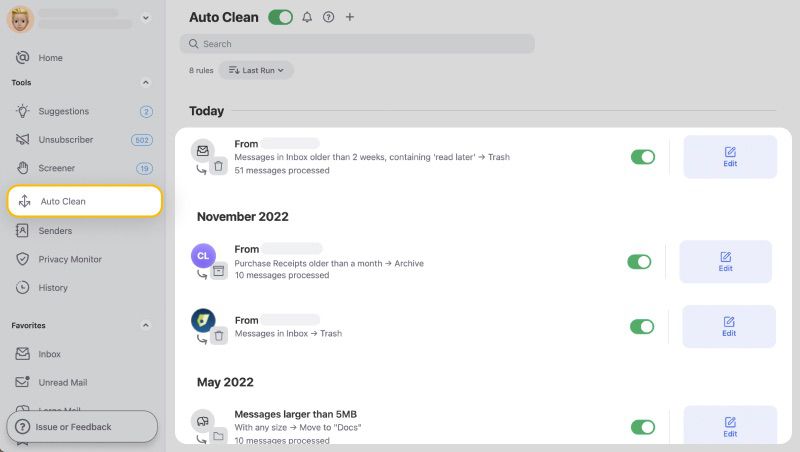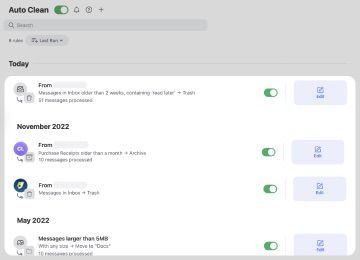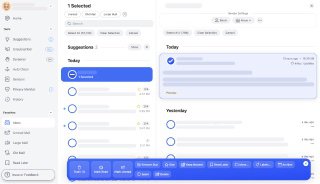Why Prioritize Email Management
For starters, inbox management can eat into your personal time. Imagine being home and still forced to respond to emails. This will almost always result in unproductivity in your workspace and a burnt-out staff. To avoid this, why not adopt these email management best practices at work.
Top 6 Email Management Best Practices
These email organization tactics will get you spending only a few minutes in your everyday emailing process.
1. Appropriate Specific Emailing Hours
Looking into your inbox to catch messages as they arrive will not only disrupt your workflow, but it’s also a prescription for unproductivity. Instead of having to check your inbox every 15 minutes or whenever the alert goes off for mails that might neither be important or urgent - designate a few minutes a day to run through your mailbox. Turn off notification, dedicate 15 minutes 3 different hours a day to running through and responding to messages. This will get you spending no more than 45 minutes a day on inbox management.
2. Unsubscribe Like Your Life Depended On It
Every website you visit is clamoring to get you signed up to their newsletters through one shady promise or another. Many times before you know it, you are signed up to many irrelevant newsletters and getting dozens of emails that aren’t worth opening. This is why you ought to unsubscribe from these newsletters like your life depended on it. However, having to worry about clicking the unsubscribe button every now and then is on its own, a time consumer.
There are tons of tools out there to take such trivial tasks out of your hands. We recommend using Clean Email for a number of reasons. This inbox management tool helps you take care of your mailbox without extra effort through its pre-set filters. The tool also packs other impressive features to help you spend less time on your mailbox.


3. Manage Group Emails In a Shared Inbox
For email management best practices for business, a common mistake with group emails many teams make is not opting for a shared inbox. Like you know, every person in a mail group receives a copy of a received message. This means everyone has to read it, even those who might have nothing to do with it. This is a time killer as every single person in a group wastes valuable time opening and reading that message. With a shared inbox, this problem is ultimately avoided. Everyone basically has one mailbox, so when a team member reads, replies, or achieves a message, every other team member is aware the mail has been handled. This is a valuable process suited for company customer communication or accounts such as contact@mybusiness.com. Gmail, Outlook, and a bunch of other service providers offer an inbuilt shared inbox.
4. Make Use Of Folders, Labels, Filters, and Categories
Every service provider has a pre-set filter and category label set on default. However, your needs and priorities can be different from the next person. That is why these options are always customizable. You can set your own filters to send certain emails to specific folders, create labels and categories to best manage your priorities. With these subfolders, labels, and filters, running through your important messages becomes a walk in the park.
You know where to find every type of mail without having to look through your entire mailbox. You can also set up sophisticated rules and filters with ease when you use Clean Email.


5. Use Canned Responses
How many times have you had to type the same message word for word or with slight variations on various occasions? Pretty often, we guess. Not something to love, is it? Other than how redundant it might make you feel, it is also one of the reasons you are spending more time than you ought to mail clients. One of the email management best practices at work is the use of canned responses. With Gmail, you can save your frequently used templates and get them out with a few clicks when sending a new message.
6. Use Email Management Apps and Extension
Let’s face it; mail service providers are limited to what they can help you accomplish. However, with third-party emails manager apps available on desktop and mobile, a whole new world of possibilities is opened. With Clean Email, you can declutter email inbox with a single click, automate many processes such as deleting or archiving messages, block unwanted senders, and unsubscribe from marketing newsletters. Such mail extensions as Hiver, Boomerang, and others will make managing your personal and work correspondence easy. Your emailing process will never remain the same with these email organization best practices.


Conclusion
These best email management tips will help you cut down a surmountable number of hours emailing at work or at home. Implementing the 6 practices crafted in the article, you can expect to get the project done faster, increase communication speed, and manage email overload more effectively. Ensure to check out Clean Email as your all-in-one inbox management tool.
Email Management Best Practices - FAQs
1. Why do I need to know email management best practices?
These tactics can save you time, increase productivity and communication speed. Why spend all your time replying or managing emails leaving your major task to suffer when you can get more done in less time with email organization best practices.
2. How do you manage email at work?
Various inbox management practices can help you manage your work-related emails. These include having a shared inbox and utilizing email software to increase productivity.
3. How do I reduce email traffic at work?
You can reduce mail traffic at work by using labels, categorizations, and prioritization. This will help you filter through dozens of emails and only manage those that are important.
4. How can I declutter my email quickly?
The fastest way to declutter your mailbox is by making use of email tools such as Clean Email. With your mail service provider, deleting emails has to be done manually, which can be time-consuming.


